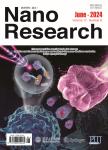A unified electrical model based on experimental data to describe electrical transport in carbon nanotube-based materials
作者机构:Univ.Grenoble-AlpesCEALITENDTNMF-38000GrenobleFrance Univ.Grenoble-AlpesCEACNRSIRIGSyMMESF-38000GrenobleFrance
出 版 物:《Nano Research》 (纳米研究(英文版))
年 卷 期:2020年第13卷第6期
页 面:1764-1779页
核心收录:
学科分类:0808[工学-电气工程] 0809[工学-电子科学与技术(可授工学、理学学位)] 07[理学] 070205[理学-凝聚态物理] 08[工学] 080501[工学-材料物理与化学] 0805[工学-材料科学与工程(可授工学、理学学位)] 0702[理学-物理学]
主 题:carbon nanotube carbon-based materials electrical conductivity electrical transport model Luttinger Liquid
摘 要:Understanding the electrical transport in carbon nanotube(CNT)materials is one key to reach very high electrical *** CNT material resistivity(ρ(T))as function of the temperature are fully apprehended by their reduced activation W(T)=dln(ρ)/dln(T)*** to now,no model accurately fits W(T)curves,thus preventing from precisely describing the CNT material electrical *** present a new electrical transport model that perfectly fits all W(T)curves found in the literature and in our own *** material resistivities are modeled byρ(T)=ρ0(T^−α+M(1+βTγT^2)).Our model has few enough parameters(α,M,β,γ)to relate them to the CNT *** 70 K,we experimentally show that CNT material resistivity follows the Luttinger Liquid theory justifying the T^−αterm in our *** 70 K,the polynomial part becomes dominant and depends on the two different CNT fabrication techniques which lead to two very different yarn *** yarns made from floating catalyst chemical vapor deposition CNTs,the polynomial is explained by the percolation of metallic CNT ***,the polynomial of yarns spun from CNT arrays is explained by the electrical transport in CNT bundles which are the basic building blocks of this type of yarns.



